Basic installation of the copper bonding strip:
This is some of the 35 year old copper strip that was removed.
While there were some relatively OK sections, there were more
areas that were corroded beyond the point of acceptable &
more than several open gaps along the run.
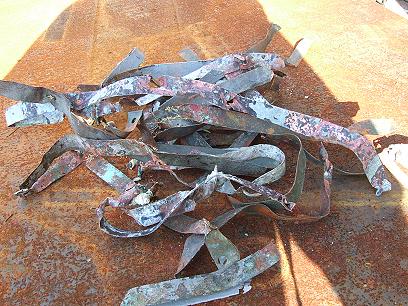
Starboard side bolt to the transom zinc. The stip was cut to proper
length & the bronze flat washer was soldered to the end.
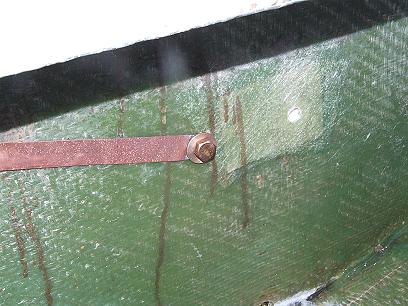
Front view:
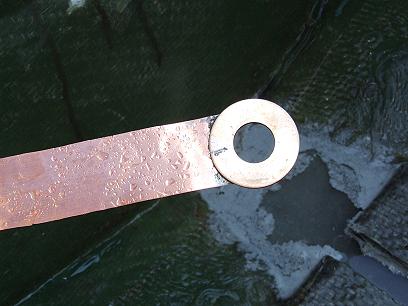
Back view:
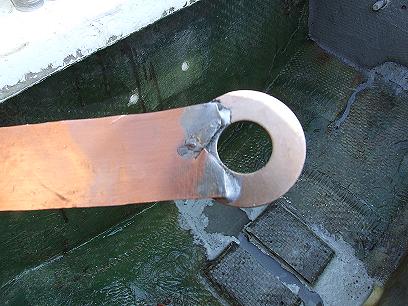
First tab; For Rudder assembly.
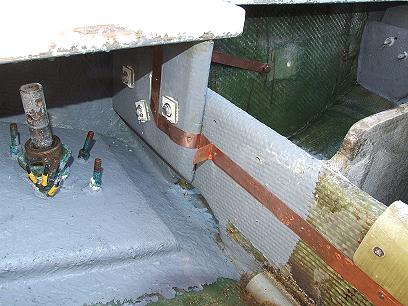
Angle changes are made by folding the copper over.
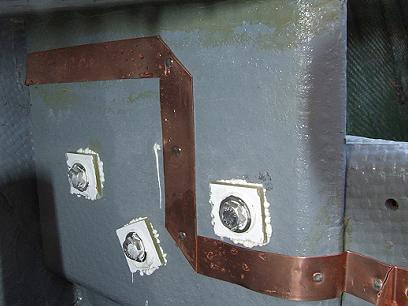
Second tab for Strut. Each tab is made by first nailing at the point of
the bend, folded loosly into the tab structure, and nailed close. The
tab is then tightly formed and ready to be drilled.
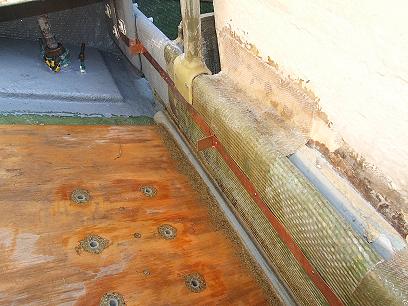
A pair of vice grips & a wooden paddle are used to clamp the tab & act
as a backing for the drill. This will keep the tab from being twisted when
the drill bit emerges.
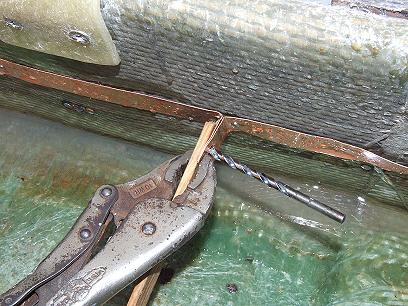
Slots are cut in bulkheads and will later be filled with resin.
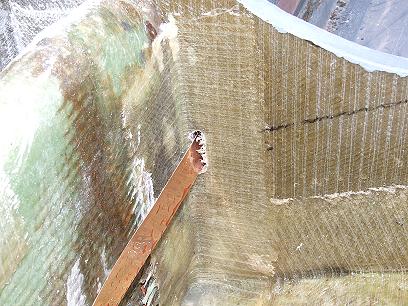
I'm using two welding clamps, one to grip the copper strip, the other
to lock onto the stringer. Using a line & stationary loop, the tension
can be pulled tight to keep the slack out of the strip.
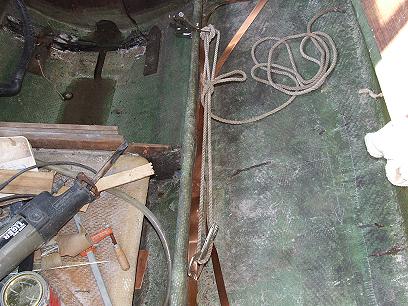
The various tools needed include soldering iron, butane micro torch,
flux, electrical grade solder, hammer, rubber malet, anvil, drill, bits,
vise grips, wood, pliers, spring clamps, and nails. I decided to use
3/4" stainless steel ring nails since I had them on hand and they can
be driven in without pre-drilling.
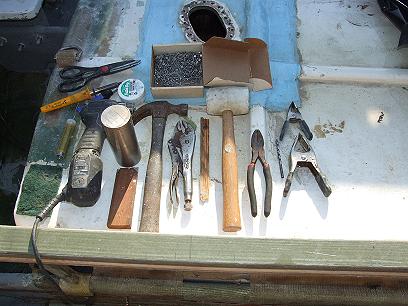
Once both sides of the boat get the coper strip run & the holes drilled
into the tabs, it's just a matter of connecting the item to be bonded to
the strip via marine grade wire & end connectors. Bruce and I prefer
6 ga wire, but nothing less than 8 ga should be used. Connectors should
be soldered onto the wire & glue type shrink wrap should be used over
the connectors, extending at least 1/4" beyond the connector.
(See image of rudder connection in my prevoius post.)
Where you'll have multiple attachments to a tab, keep the number
of connections to a maximum of three. If more connections will be
needed in a particular area, make more tabs.
I'll be glassing over the spaces between tabs, as was done on
"Buddy Boy", but as stated earlier, you can get by with just paint.
The point is to protect the copper from surface corrosion and to
minimumize things from catching any slack in the strip.
Like an anchor stored in the bilge...
Br,
Patrick





















